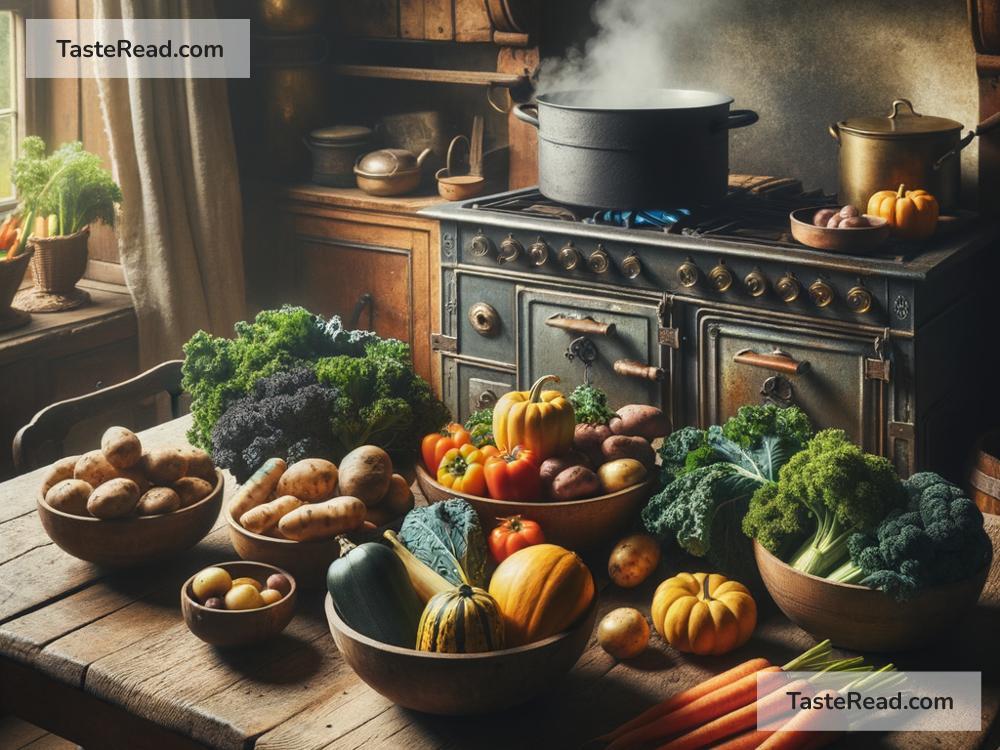How to Cook Seasonal Harvest Soups
As the seasons change and fresh produce becomes available, there’s no better way to enjoy nature’s bounty than by making comforting seasonal harvest soups. Not only are these soups delicious and nutritious, but they also make use of the freshest ingredients at the peak of their flavor. Cooking seasonal soups is simple, fun, and a wonderful way to bring warmth to your kitchen. In this blog, we’ll explore how to create soups based on the vegetables and fruits of each season, along with some tips to make your soup extra tasty!
What Is a Seasonal Harvest Soup?
A seasonal harvest soup is made using ingredients that are readily available during a specific time of year. For example, during autumn, you might use pumpkins, squash, or apples, while spring soups can include asparagus or peas. Since seasonal ingredients are fresher and often cheaper, these soups are budget-friendly and packed with flavor.
Making seasonal harvest soups allows you to get creative and experiment with various combinations of vegetables, herbs, and spices. It’s a great way to celebrate the flavors of the season while eating wholesome and comforting meals.
Why Cook Seasonally?
There are many reasons why cooking with seasonal ingredients is a smart choice:
- Better Flavor: Fresh, in-season produce tastes better because it is harvested when it’s ripe.
- Cost-Effective: Seasonal foods are more abundant, so they are usually less expensive at grocery stores or farmers’ markets.
- Healthy: Seasonal vegetables and fruits are packed with nutrients since they are harvested at the right time.
- Eco-Friendly: Eating seasonally often means less reliance on foods shipped from far away, which reduces your environmental impact.
- Variety: Cooking seasonal soups encourages you to try new flavors and vegetables throughout the year.
Tools You’ll Need
Before you dive into making your soup, make sure you have the tools necessary for cooking. Here’s a simple list:
- A large soup pot or stockpot
- A sharp knife for chopping vegetables
- A cutting board
- A blender (optional, for creamy soups)
- A ladle for serving
- Measuring cups and spoons
- Spatula or wooden spoon for stirring
With these essentials in hand, you’re ready to start cooking!
Seasonal Ingredients by Season
Seasonal harvest soups are all about using fresh ingredients. Here’s a quick guide to what’s available during different times of the year:
- Spring: Asparagus, peas, carrots, radishes, leeks, spinach
- Summer: Tomatoes, cucumbers, zucchini, bell peppers, corn, fresh herbs (like basil)
- Autumn: Pumpkins, butternut squash, sweet potatoes, apples, kale
- Winter: Potatoes, cabbage, celery root, onions, turnips, parsnips
Pick your favorite seasonal vegetables and think about how their flavors could pair well together in a soup.
How to Make a Basic Seasonal Soup
Follow these steps to make a delicious seasonal soup:
Step 1: Choose Your Vegetables
Pick the freshest seasonal veggies from your local grocery store, farmers’ market, or garden. For example, if it’s autumn, you might choose butternut squash, carrots, and sweet potatoes.
Step 2: Prepare Your Ingredients
Wash all your vegetables thoroughly. Peel them if needed, remove seeds, and chop them into even-sized pieces so they cook evenly.
Step 3: Build the Base
Start by heating olive oil or butter in a large soup pot. Add aromatics like chopped onions and garlic, and let them cook for a few minutes until they turn translucent. This gives your soup a flavorful base.
Step 4: Add Vegetables
Add your seasonal vegetables to the pot, stirring them gently. Let them cook for a few minutes to enhance their flavor.
Step 5: Pour in Liquid
Add a liquid base, such as vegetable broth, chicken broth, or just water. For a thicker soup, you can add a splash of cream or coconut milk. The amount of liquid depends on how chunky or soupy you want your dish to be.
Step 6: Season It
Add salt, pepper, and other spices to taste. Seasonal soups often taste amazing with herbs like thyme, parsley, or rosemary. You can also use spices like paprika, cumin, or nutmeg depending on the flavor you want.
Step 7: Cook Until Tender
Let your soup simmer for 20-40 minutes, or until the vegetables are soft and cooked through. Stir occasionally to prevent sticking.
Step 8: Blend (Optional)
If you prefer a creamy soup, use a blender or immersion blender to puree the soup. Leave it chunky if you like more texture in your meal.
Step 9: Taste and Adjust
Taste the soup and adjust the seasoning as needed. Add more salt, pepper, or spices to suit your preferences.
Step 10: Serve and Enjoy
Serve your soup hot in a bowl and garnish with fresh herbs, a drizzle of olive oil, or a dollop of yogurt for extra flavor. Pair it with crusty bread or crackers for a satisfying meal.
Example Recipe: Autumn Butternut Squash Soup
Here’s a simple recipe to get you started.
Ingredients:
- 1 medium butternut squash (peeled, seeded, and cubed)
- 1 carrot (chopped)
- 1 onion (chopped)
- 2 cups vegetable broth
- 1 cup water
- 1 teaspoon cinnamon
- Salt and pepper to taste
- Olive oil for cooking
Instructions:
- Heat olive oil in a soup pot. Sauté the onion until soft.
- Add butternut squash and carrot. Cook for 3-5 minutes to enhance the flavor.
- Pour in the broth and water. Season with cinnamon, salt, and pepper.
- Simmer for 30 minutes, or until the vegetables are tender.
- Blend the soup until smooth. Taste and adjust seasoning.
- Serve warm, garnished with fresh parsley or a swirl of cream.
Conclusion
Seasonal harvest soups are a joy to cook and eat. They celebrate fresh produce and allow you to stay connected to the rhythm of nature. Whether you’re enjoying a chilled summer tomato soup or a hearty winter potato soup, these meals are nourishing and delicious. So grab your ingredients, fire up the stove, and let the season guide your cooking!


